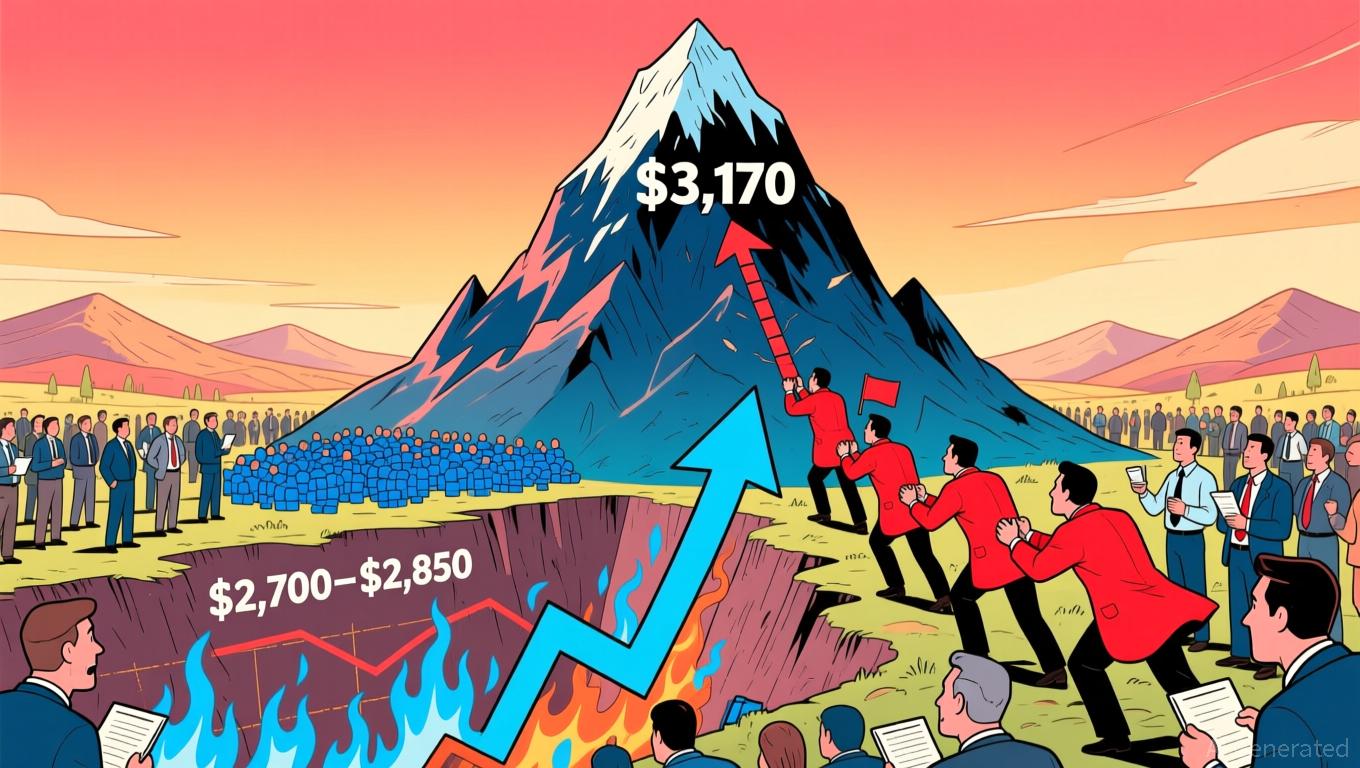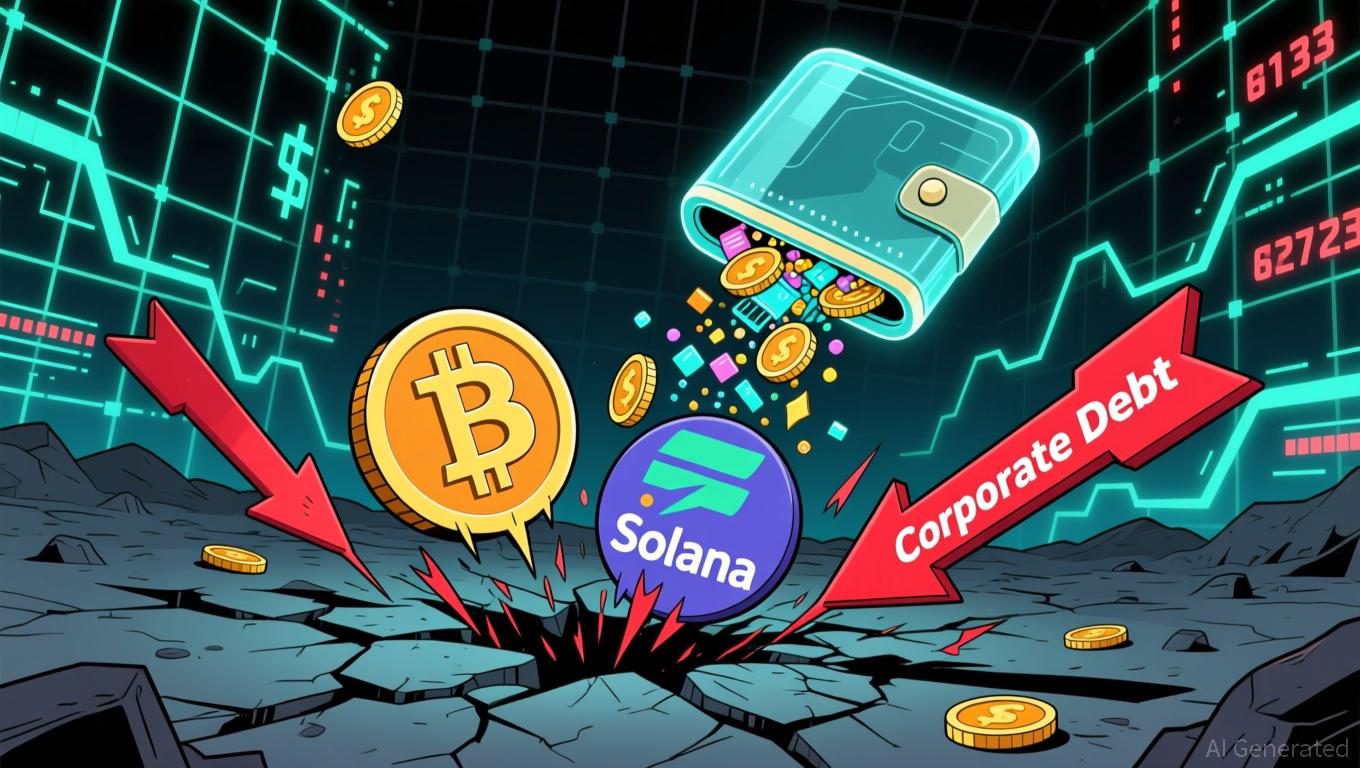Ethereum News Today: ETH Holds $2,700—Will Buyers Prevent a Drop to $2,500?
- Ethereum tests $2,700–$2,850 support as bearish momentum intensifies, with breakdown risks exposing $2,450–$2,550 levels. - Long-term holders sold 58,352 ETH ($175M) in one day, while whales accumulate, signaling potential redistribution. - Fed minutes triggered a seven-month low near $2,870, aligning with historical support clusters and 2021–2022 price range midpoints. - A $2,700–$2,850 defense could target $3,050–$3,150, but sustained recovery requires breaking above $4,200 trendline.
Ethereum (ETH) is at a crucial crossroads as bearish forces grow stronger, with the cryptocurrency challenging significant support zones that may shape its short-term direction. The coin has been moving within a downward channel, and both analysts and blockchain data point to possible triggers for a bounce as well as ongoing structural issues that could extend the current decline.
Technical signals indicate

Sentiment in the market remains negative, further weighed down by broader economic uncertainty. The publication of Federal Reserve minutes in late November sparked a rapid sell-off, driving ETH to a seven-month low near $2,870
The next move depends on whether buyers can maintain the $2,700–$2,850 support. If this level holds, ETH could aim for the $3,050–$3,150 imbalance zone, but unless it convincingly breaks above the downward trendline from $4,200, any rally is likely to be corrective in nature
Disclaimer: The content of this article solely reflects the author's opinion and does not represent the platform in any capacity. This article is not intended to serve as a reference for making investment decisions.
You may also like
Bitcoin News Update: Innovative Tokenomics and Interoperable Cross-Chain Features: The Key to Altcoin Success in 2025
- 2025 altcoin market highlights Bitcoin Munari (BTCM), XRP Tundra, and Mutuum Finance (MUTM) leveraging multi-chain infrastructure and structured presales. - BTCM's fixed-supply model ($0.35 presale) and Solana-based SPL token deployment aim for 2027 Layer-1 migration with EVM compatibility and privacy features. - XRP Tundra offers cross-chain yield via dual-token system (TUNDRA-S/X) with $0.214 Phase 12 pricing and audited Cryo Vaults for Bitcoin holders. - Mutuum Finance (MUTM) nears 99% Phase 6 allocat

Bitcoin Updates: Institutional Funds Move: AI ETFs Gain Momentum Amid Growing Crypto Debt Issues
- Bitcoin and Solana face renewed selling pressure as digital asset treasury companies (DATCos) offload holdings amid $42.7B corporate debt inflows into crypto. - DATCos, underwater on $126K Bitcoin peak investments, approach parity in market-to-net-asset-value ratios, triggering 40% Solana treasury value declines since October. - Institutional capital shifts toward AI ETFs (e.g., Global X AI ETF) as firms prioritize AI infrastructure investments over crypto, linking performance to tech stock volatility. -

Fed Policy Split Drives Derivatives Activity as Crypto Teeters on Brink of Easing
- Fed policy uncertainty drives derivatives bets, with CME FedWatch pricing 69.7% chance of 25-bp December rate cut amid mixed inflation and labor data. - Crypto markets anticipate easing cycle, but remain fragile as Crypto Fear & Greed Index hits "extreme fear" level 14 despite Coinbase's bearish odds assessment. - Crude oil drops on U.S. Ukraine peace plan and OPEC output hike, while dollar strength compounds risks for rate-cut-sensitive commodities. - CME Group faces scrutiny after $2M insider sale, yet

Modern Monetary Theory and the Valuation of Cryptocurrencies: Do MMT Principles Support Rapid Increases in Token Prices?
- 2025 analysis explores whether Modern Monetary Theory (MMT) can justify Momentum (MMT) token's 1,300% price surge. - Token's rise stems from Binance airdrops, U.S./EU regulatory clarity, and institutional investment, not MMT principles. - Academic research highlights crypto valuation duality: network effects coexist with speculative behavior driven by heterogeneous expectations. - MMT influences macroeconomic frameworks (CBDCs, fiscal policy) but fails to predict token-specific surges dominated by retail